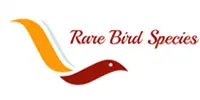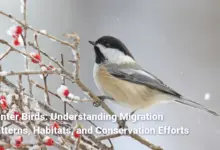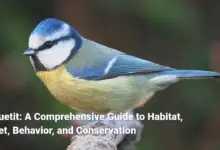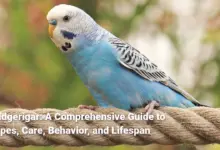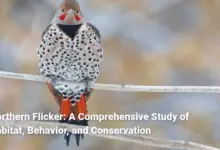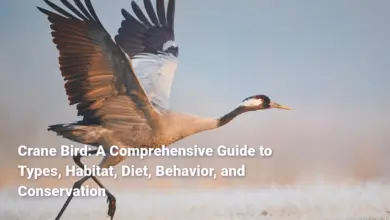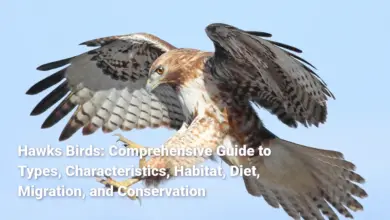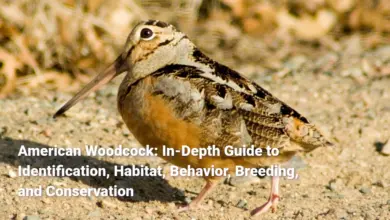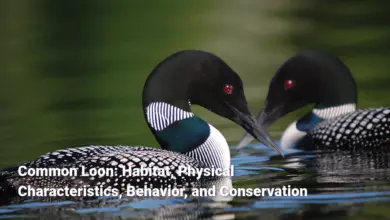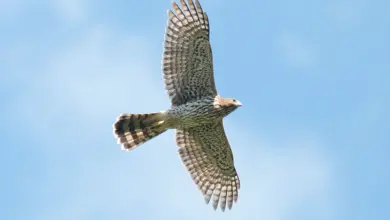Black-naped Pheasant Pigeon: Status, Threats, and Indigenous Views
Unveiling the Secrets of the Black-naped Pheasant-pigeon: From Taxonomy to Future Research
Black-naped Pheasant Pigeon
The mesmerizing Black-naped Pheasant Pigeon (Otidiphaps insularis), a bird often draped in mystery and enigma, emerges as a fascinating subject in the realm of ornithology. Commonly found on Fergusson Island, Papua New Guinea, this species captivates the hearts of bird watchers and conservationists alike, while leaving scientists awed with its elusive nature and limited population. For over 140 years, this pigeon was considered lost to science, only to be rediscovered recently, igniting renewed efforts to understand its behavior, habitat, and vital conservation status. Over 46 cm in length, this ground-dwelling bird displays strikingly unique characteristics that set it apart from its relatives. It thrums with cultural significance among the Indigenous communities of its native land, echoing in local legends and enriching the ecological tapestry of its environment. As we delve deeper, we uncover the layers of this bird’s existence: its scientific classification, conservation efforts, distinct physicality, and ecological interactions stand at the vanguard of ongoing research aimed at preserving its legacy and habitat.
Scientific Classification
The scientific classification of the Black-naped Pheasant Pigeon not only gives it a name but also places it within an intricate network of living organisms in our world. With a lineage tracing back under the watchful eyes of scholars like Salvin & Godman, who first described it in 1883, this species belongs to a lineage interwoven with history and evolutionary success. It finds its niche within the family Columbidae, known for its diverse range of pigeons and doves. Each level of its classification serves as a metaphorical stepping stone, helping us understand its place in the vast web of life.
| Classification Level | Taxonomic Rank | Example |
|---|---|---|
| Kingdom | Animalia | Animals |
| Phylum | Chordata | Vertebrates |
| Class | Aves | Birds |
| Order | Columbiformes | Pigeons and Doves |
| Family | Columbidae | Doves |
| Genus | Otidiphaps | Pheasant-pigeons |
| Species | Otidiphaps insularis | Black-naped Pheasant Pigeon |
This structured classification paints a picture of the Black-naped Pheasant Pigeon as a unique yet integral part of the biological narrative, reinforcing the idea that each species holds its own significance in our shared environment. This pigeon, renowned for its distinctively terrestrial lifestyle, embodies the delicate balance of existence within the lush habitats it occupies.
Taxonomy of the Black-naped Pheasant Pigeon
To comprehend the Black-naped Pheasant Pigeon fully, delving into its taxonomy unveils its unique relationship within the avian world. By defining its lineage through taxonomic ranks, we create a narrative of its biological inheritance and ecological role. As it sits within the Columbidae family, it occupies a realm that encompasses a vast diversity of pigeons, but it branches out distinctly through its genus, Otidiphaps. This classification highlights a lineage that is particularly adapted to a ground-dwelling lifestyle, portraying it as a bird close to the earth rather than high-flying relatives.
- Kingdom: Animalia – Acknowledges its status among all animals.
- Phylum: Chordata – Identifies it as a vertebrate, with a backbone that signifies higher complexity among animals.
- Class: Aves – Classifies it among birds, universally distinguished by feathers and a beak.
- Order: Columbiformes – Positions it within the group known for its seed-eating habits and monogamous behaviors.
- Family: Columbidae – This ties it closely to doves and pigeons, known for their gentle nature and cooing sounds.
- Genus: Otidiphaps – Identifies a distinct lineage marked by specific characteristics that set them apart, particularly the pheasant-like pigeons.
- Species: Otidiphaps insularis – Finalizes its classification, signifying its unique essence found only on Fergusson Island.
Through this lens of taxonomy, the Black-naped Pheasant Pigeon appears not merely as a bird but as a symbol of the interconnectedness among species. Its existence calls attention to the critical need for conservation efforts and ongoing studies that can illuminate the challenges it faces.
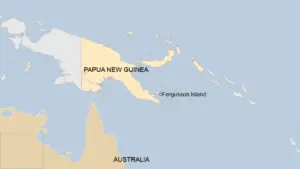
Conservation Status of the Black-naped Pheasant Pigeon
As a feathered emblem of fragility, the Black-naped Pheasant Pigeon holds the dire title of being critically endangered, serving as a poignant reminder of nature’s vulnerability. Estimates suggest that fewer than 250 mature individuals remain, dwelling primarily within the isolated forests of Fergusson Island. The challenges for this elusive avian marvel are manifold, primarily hinging on habitat loss spurred by deforestation and agricultural encroachment. The delicate ecosystems that shelter these birds are eroding, a disheartening reality exacerbated by human activity.
Key Points on Conservation Status:
- Habitat Loss: Logging and agricultural practices encroach upon their critical habitat, compelling them into smaller territories.
- Population Decline: The observed decline in population numbers emphasizes the urgent need for conservation strategies to stabilize and protect remaining individuals.
- Limited Research: Much of the pigeon’s behavior and breeding patterns remain poorly documented, highlighting the necessity of field studies aimed at uncovering ecological details.
- Indigenous Involvement: Recent conservation actions emphasize collaboration with local communities, which can enrich preservation campaigns through the integration of traditional ecological knowledge.
The rapidly diminishing habitats of the Black-naped Pheasant Pigeon signal an ecological alarm bell we are reminded that once a species loses its foothold, recovering population numbers becomes more difficult. The intersection of local community involvement and scientific endeavor offers a promising avenue for revitalizing efforts needed to save this remarkable bird.
Physical Characteristics
The Black-naped Pheasant Pigeon is a visual marvel, warranting admiration not just for its uniqueness but also for its robust build and striking plumage. This pigeon, reminiscent of a chicken in size, measures approximately 46 cm in length, a fitting stature for a creature that thrives at ground level. Its appearance is unique; it boasts a broad, laterally compressed tail that enhances its resemblance to a pheasant a clever nod in its nomenclature.
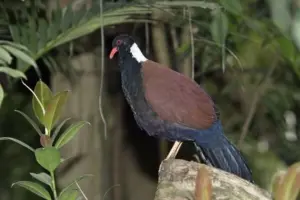
A Glimpse into the Black-naped Pheasant Pigeon’s Physical Traits:
- Coloration: The bird is cloaked in purplish-black underparts that emphasize its distinctive look against the backdrop of verdant foliage. The contrasting chestnut wings and mantle punctuate its physical presence, offering a visual stimulus to onlookers.
- Tail Dynamics: When it walks, the bird exhibits a fascinating behavior pumping its tail up and down, adding a quirky charm to its movements, akin to a dance performed in the underbrush.
- Size: With its size likened to that of a plump chicken, the Black-naped Pheasant Pigeon stands out amongst other more petite pigeon varieties.
Summary of Key Physical Characteristics:
| Feature | Description |
|---|---|
| Length | Approximately 46 cm |
| Coloration | Purplish-black underparts; chestnut wings |
| Tail | Broad, laterally compressed, exhibiting dynamic movements |
| Behavior | Ground-dwelling, known for unique tail-pumping action |
These remarkable features not only set the Black-naped Pheasant Pigeon apart but paint a picture of adaptation for life on the forest floor. Their coloration, while subdued, serves a purpose camouflaging them from potential predators as they forage amongst the leaves and twigs.
Black-naped Pheasant Pigeon’s Size and Appearance
When observing the Black-naped Pheasant Pigeon, it becomes evident that size and appearance play a crucial role in its adaptation to the forest environment. Measuring approximately 46 cm, it occupies a space that straddles the line between small and robust, similar to that of a plump game bird. This size not only allows it to navigate the underbrush effectively but also helps it defend itself against predators. Its well-defined appearance, characterized by the unusual combination of a purplish-black body and chestnut wings, forms a visual narrative that signifies its unique ecological heritage.
In a multitude of ways, the size of the Black-naped Pheasant Pigeon shapes its interactions within the ecosystem. The substantial size allows it to partake in feeding habits that smaller pigeons might find challenging. More robust and grounded than its relatives, this pigeon’s distinctive appearance enriches the biodiversity of its native environment, and finding it amidst intricate foliage becomes akin to uncovering hidden treasure.
As it navigates its habitat, this unique sizing presents an opportunity for ecological roles that involve seed dispersal essential for maintaining forest integrity. Illustratively, it carries on the narrative of life within its rainforest domain while sharing that narrative with its appearance, creating a connection that binds it to its environment.
Distinctive Features of the Black-naped Pheasant Pigeon
The Black-naped Pheasant Pigeon is easily recognized by a collection of distinctive features that reveal its unique adaptations and lifestyle. Its rich plumage and behaviors not only distinguish it from other pigeons but also serve essential ecological purposes. As a bird that thrives predominantly on the forest floor, its features are inherently tailored to a terrestrial way of life.
- Coloration and Markings: The purplish-black feathers envelop the head, underparts, and lower back, marking it distinctively against the foliage. Meanwhile, the chestnut-colored wings offer a complementary contrast that enhances its beauty.
- Pheasant-like Tail: One of the pigeon’s most recognizable features is its broad and laterally compressed tail. This tail acts not just as a visual identifier but plays a role in communication and balance as it forages through its dense habitat.
- Vocalization: The Black-naped Pheasant Pigeon expresses its presence through a unique call, often described as a loud and far-carrying “wu-huwoooooa.” This distinctive voice resonates in the forest, marking its territory and signaling its presence to fellow birds or potential mates.
In essence, each feature contributes to the identity of the Black-naped Pheasant Pigeon, weaving together an ecological narrative that speaks of survival, adaptation, and the delicate interplay of substance and style within its lush environment. These characteristics embody a unique evolutionary journey that has led to its current status as a remarkable species deserving of attention and conservation efforts.
Habitat and Distribution
The habitat of the Black-naped Pheasant Pigeon is as captivating as the bird itself, nestled in the overarching tapestry of the primary forests of Fergusson Island. This unique bird has carved a niche within one of the most biodiverse ecosystems, showcasing its adaptability while underscoring its vulnerability. These pigeons primarily favor hilly and lower montane regions, contributing to an intricate relationship with their environment.
Key Habitat Traits of the Black-naped Pheasant Pigeon
- Primary Rainforest: The Black-naped Pheasant Pigeon thrives specifically in primary rainforest ecosystems, which are relatively undisturbed compared to lower areas undergoing deforestation. Here, the glimmer of sunlight filtering through dense canopies supports the rich flora that sustains its diet.
- Elevation Preference: These pigeons typically reside at elevations of at least 2,050 meters, favoring hilly terrain that offers protective cover and food abundance. This preference showcases their role as ground-dwellers, using the elevation to avoid predators while finding ample food.
- Foraging on the Forest Floor: The bird’s foraging behavior takes place mostly on the forest floor, where it scours for fallen fruits and seeds. This ground-dwelling nature aligns with its evolutionary traits, allowing it to utilize the diverse plant life that the rainforest nurtures.
- Limited Distribution: The geographical range of the Black-naped Pheasant Pigeon is incredibly restricted, being endemic solely to Fergusson Island. This isolation intensifies the challenges it faces, especially amid ongoing threats such as logging and agricultural expansion.
Summary of Habitat Features of the Black-naped Pheasant Pigeon:
| Trait | Description |
|---|---|
| Ecosystem | Primary rainforest |
| Elevation Range | At least 2,050 meters |
| Foraging Style | Ground-dwelling, foraging for seeds/fruits |
| Distribution | Limited to Fergusson Island |
The ecosystem surrounding the Black-naped Pheasant Pigeon is rich with resources but precarious in the face of human activities. This unique habitat shapes not only the lives of these pigeons but also the health of the forests they inhabit, which is intrinsically tied to their eventual survival.
Geographic Range
The Black-naped Pheasant Pigeon occupies a specific niche on Fergusson Island, characterized by its unique geographic range and habitat requirements. This endemic species finds itself in a narrow corridor of lush primary rainforest nestled among the rugged terrains of the D’Entrecasteaux Islands. The astonishing biodiversity of this locale frames the very existence of the pigeon, yet the restricted nature of its range poses challenges to its survival.
- Area of Occupancy: Recent estimates indicated approximately 1,140 km² of forest remains within the pigeon’s range, but with habitat destruction looming, this area is shrinking rapidly.
- Closed Canopy Forests: Within its geographic confines, the Black-naped Pheasant Pigeon is characteristically associated with closed canopy forests that provide variability in food resources and safety from predators. The interplay of altitude and dense vegetation creates a suitable microhabitat.
- Isolation Risks: With such a limited distribution, the pigeon’s vulnerability to both habitat loss and genetic dilution among a dwindling population becomes apparent. Conservation biologists express concern that isolation may lead to inbreeding, further jeopardizing its survival.
- Endemic Importance: The fact that this species is endemic to Fergusson Island emphasizes its value, as losing it would mean a loss of biodiversity not just locally but ecologically, influencing the dynamics of the entire forest.
Overview of Key Geographic Traits:
| Feature | Description |
|---|---|
| Area of Occupancy | Approximately 1,140 km² of forest on Fergusson Island |
| Forest Type | Closed canopy forests, essential for foraging |
| Population Vulnerability | Isolated, leading to concerns over genetic diversity |
| Endemism | Unique to Fergusson Island, implications for biodiversity |
The geographic challenges faced by the Black-naped Pheasant Pigeon encapsulate the critical experiences of numerous wildlife species worldwide, subsisting on limited resources under increasing human threat. As the ecological pressures mount, understanding and preserving this niche becomes vital in keeping the balance between nature and civilization.
Preferred Environment
The ideal environment of the Black-naped Pheasant Pigeon reflects a delicate dance with the natural world. This unique bird’s preference for specific ecological conditions provides an insight into its survival strategies. As a ground-dwelling creature, it necessitates habitats rich with resources, shelter, and minimal disturbance from human activities.
- Primary Rainforest: The Black-naped Pheasant Pigeon prefers undisturbed primary rainforest environments, indicating its reliance on ecosystems that have largely remained untouched by urbanization and logging practices.
- Hilly and Lower Montane Areas: The pigeon gravitates towards hilly landscapes where it can forage and safely nest. The gradient of elevation not only provides a refuge from predators but also ensures it has access to an array of food resources.
- Food Sources: The bird’s diet consists primarily of seeds and fallen fruit; thus, the health of its environment correlates directly to the preservation of its food supply. The dense canopy of primary forests is crucial, as it supports a thriving ecosystem that nurtures diverse plant life.
- Nesting Behavior: Ground nesting, although risky from a predation standpoint, aligns with the Black-naped Pheasant Pigeon’s lifestyle. Its choice to nest on the forest floor allows it to blend into the environment, providing some semblance of safety against aerial predators.
Summary of Preferred Environmental Traits:
| Trait | Description |
|---|---|
| Ecosystem Type | Primary rainforest |
| Elevation Range | Hilly and lower montane areas |
| Predominant Food Sources | Seeds, fruits, and foliage |
| Nesting Style | Ground nesting, using vegetation for cover |
The continued survival of the Black-naped Pheasant Pigeon depends on the preservation of these preferred environments. Partnership with local communities, augmented by scientific research, will be instrumental in maintaining the sanctity of its habitat acting as a lifeline for this enigmatic species.
Behavior and Diet
Behaviorally, the Black-naped Pheasant Pigeon captivates with its distinctive habits that reflect both its adaptations and the compelling beauty of its existence. Ground-dwelling and gentile, these pigeons embody a lifestyle tailored to thriving within the underbrush of the rainforest. Their feeding and social structures offer a deeper understanding of the interplay between species in their ecosystem.
Key Aspects of the Black-naped Pheasant Pigeon’s Behavior and Diet
- Foraging Techniques: As primarily ground-dwelling birds, they exhibit foraging behaviors characterized by a calm and deliberate approach to finding food. They mainly search for seeds, fruits, and possibly leaves, often in pairs or small groups, sharing the experience similar to communal grazing among terrestrial animals.
- Diet Composition: The Black-naped Pheasant Pigeon primarily feeds on seeds and fallen fruits, typically consuming varieties endemic to its forest habitat. Reports highlight specific fruit preferences, including the ‘Buo’o’ fruit, showcasing a reliance on local flora that further ties it to its environment.
- Nurturing Behavior: Remarkably, both adult pigeons participate in nurturing their young, feeding them regurgitated food, a characteristic behavior noted among many pigeon species. This communal nurturing plays a vital role in chick survivability, enhancing the continuation of their lineage.
- Secretive Nature: Given their elusive lifestyle, these pigeons exhibit secretive behaviors, moving cautiously within dense foliage. This behavior not only aids in their survival but also contributes to the challenges faced by researchers seeking to study them.
Summary of the Black-naped Pheasant Pigeon’s Behavior and Diet:
| Behavior Aspect | Description |
|---|---|
| Foraging Style | Ground-dwelling, foraging for seeds and fruits |
| Diet Composition | Primarily seeds and fallen fruits |
| Nurturing Behavior | Both parents feed chicks regurgitated food |
| Behavioral Traits | Secretive nature, moving cautiously in vegetation |
The behaviors of the Black-naped Pheasant Pigeon intertwine seamlessly with its diet, reinforcing the significance of both elements in ensuring its survival in a rapidly changing world.
Black-naped Pheasant Pigeon’s Feeding Habits
The feeding habits of the Black-naped Pheasant Pigeon exemplify its deep connection to the environment. This ground-dwelling pigeon is finely attuned to the subtleties of its forest habitat, utilizing its unique adaptive features to thrive amidst dense foliage.
- Active Foraging: This pigeon generally forages on the forest floor, where it meticulously probes through leaves and soil to uncover seeds and fruits. The strategic location of its diet allows it to interact cooperatively with the ecosystems surrounding it.
- Local Preferences: Specific fruits and seeds play a vital role in its diet, underlining the necessity of healthy flora for this bird’s sustenance. Notably, the reliance on local vegetation ties the bird to its habitat, forming part of the broader ecological tapestry.
- Social Foraging: Social structures also influence feeding behaviors; pigeons are often observed foraging in pairs or small groups, indicating a level of social cooperation while minimizing the risks of predation.
- Bilateral Nutrition: By consuming diverse food options, the Black-naped Pheasant Pigeon maintains balanced nutritional intake, which supports breeding and nurturing efforts necessary for raising its young.
Summary of the Black-naped Pheasant Pigeon’s Feeding Habits:
| Feeding Aspect | Description |
|---|---|
| Foraging Style | Ground-dwelling, probing through leaves for food |
| Dietary Preferences | Seeds and local fruits, indicating ecological ties |
| Social Structure | Foraging in pairs or small groups |
| Nutritional Balance | Consuming diverse food options for overall health |
Understanding the feeding habits of the Black-naped Pheasant Pigeon reveals critical information not only about its life history but encourages a deeper commitment to preserving the ecosystems that support it.
Black-naped Pheasant Pigeon’s Breeding and Nesting
To comprehend the life cycle of the Black-naped Pheasant Pigeon, one must navigate the secretive nature of its breeding and nesting practices. As a species with limited observations in the wild, much remains obscure, yet some assumptions can be drawn from closely related species within the pigeon family.
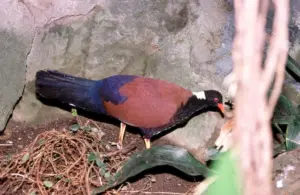
- Nest Construction: The pigeon is presumed to nest on the ground, utilizing dense vegetation and leaf litter for cover. This behavior resonates with their secretive behaviors, providing camouflage while fostering a safe space for their young to develop.
- Breeding Season: The breeding season is likely associated with periods of abundant food availability. The correlation between resource saturation and reproductive activities underscores the influence of environmental conditions on breeding opportunities.
- Parental Care: Interestingly, both adult pigeons are involved in nurturing their young. Observations suggest they feed chicks regurgitated crop milk a nurturing behavior common among pigeon species. This dual-parent approach enhances chick survival rates and reflects a commitment to continuity.
- Limited Research Insights: Despite the general overview provided, substantial gaps exist in documented breeding behaviors. Ongoing studies are pivotal in uncovering the specifics of their reproductive strategies and nesting preferences, particularly as they are critical for the survival of this endangered species.
Summary of the Black-naped Pheasant Pigeon’s Breeding and Nesting:
| Aspect | Description |
|---|---|
| Nest Construction | Ground nesting with dense vegetation for cover |
| Breeding Season | Likely coincides with food abundance |
| Parental Care | Both parents feed and nurture young |
| Research Gaps | Limited documentation necessitating further study |
The breeding habits of the Black-naped Pheasant Pigeon weave a crucial narrative that complements its overall survival strategy, underscoring the interconnectedness of ecological resources and breeding success.
Recent Rediscoveries
The recent rediscovery of the Black-naped Pheasant Pigeon marks a pivotal moment in ornithological history. For over 140 years, this elusive bird had vanished from scientific sight, leaving a vacuum in our understanding of its ecology and conservation needs. However, a pivotal expedition in September 2022 unveiled the existence of this remarkable species once more, reigniting discussions around its critical status and ongoing conservation efforts.
Key Highlights of the Black-naped Pheasant Pigeon Rediscovery:
- Search for Lost Birds Initiative: This expedition was part of a broader initiative aimed at locating and studying birds that have not been documented for decades, illustrating the importance of ongoing research in biology.
- Collaborative Efforts: Researchers from organizations such as the American Bird Conservancy, the Cornell Lab of Ornithology, and the Papua New Guinea National Museum worked alongside local hunters, whose insights were crucial to locating the bird. This kind of collaboration emphasizes the importance of blending scientific inquiry with local knowledge.
- Technological Innovations: Remote camera traps were strategically placed in areas identified by local hunters, leading to the successful capture of the pigeon on film an exciting milestone for ornithologists and conservationists alike.
- Diverse Challenges: The expedition was not without its challenges; navigating rugged terrain and overcoming the elements did not deter the team, showcasing the commitment required to study such a rare species.
Summary of Black-naped Pheasant Pigeon Rediscovery Highlights:
| Highlight | Description |
|---|---|
| Initiative | Part of the Search for Lost Birds |
| Collaborative Research | Local hunters played a crucial role in locating the bird |
| Innovative Methods | Use of remote camera traps for documentation |
| Challenges Faced | Navigating rugged terrain, facing harsh conditions |
The rediscovery of the Black-naped Pheasant Pigeon serves as a powerful reminder of the importance of dedicated conservation efforts. As understanding deepens, there’s a collaborative spirit that connects scientists and local communities, striving toward a common goal of both preservation and knowledge.
Black-naped Pheasant Pigeon Expedition Highlights
The journey to rediscover the Black-naped Pheasant Pigeon resulted in an expedition characterized by teamwork, innovation, and dedication. Over a month-long endeavor, researchers faced numerous challenges in a bid to document this rarely seen species, underscoring the importance of perseverance in conservation.
Major Expedition Highlights:
- Duration and Relentless Efforts: Spanning over a month, the team engaged in rigorous trekking through the dense and often perilous landscapes of Fergusson Island, fully demonstrating their commitment to this mission.
- Indigenous Knowledge Integration: Local engagement was crucial; hunters provided invaluable insights into recent sightings and behavioral habits, emphasizing the importance of local expertise in resolving ecological mysteries.
- Technological Implementation: The use of remote camera traps proved instrumental in the successful documentation of the Black-naped Pheasant Pigeon, emphasizing how modern technology can bolster conservation efforts significantly. The team captured footage a mere two days before the expedition’s conclusion, showcasing an efficient approach to research.
- Conservation Implications: The expedition impacted more than just scientific inquiry; it has encouraged renewed conversations about conservation strategies necessary to protect the remaining habitats of this critically endangered species.
Summary of Expedition Highlights:
| Highlight | Description |
|---|---|
| Duration | Over a month of rigorous trekking |
| Indigenous Knowledge | Local hunters offered critical insights |
| Technology Utilization | Successful use of camera traps for documentation |
| Conservation Conversations | Sparked discussions on habitats and protective measures |
The expedition’s results not only revived an understanding of the Black-naped Pheasant Pigeon but also encapsulated a shared vision of conservation that weds scientific inquiry with local knowledge and community involvement.
Local Engagement and Knowledge of the Black-naped Pheasant Pigeon
In the quest to rediscover the Black-naped Pheasant Pigeon, local engagement proved to be of paramount importance. By weaving Indigenous knowledge into scientific research, the expedition team demonstrated that understanding the landscape and its inhabitants cannot happen in isolation.
Crucial Aspects of Local Engagement:
- Indigenous Insights: Throughout the expedition, the knowledge held by local hunters was invaluable. Their familiarity with the land and the bird’s behaviors directed researchers to promising locations for sightings, demonstrating that local expertise should not be undervalued.
- Cultural Connections: The Black-naped Pheasant Pigeon referred to as “Auwo” by local communities holds cultural significance and embodies a connection between the people and their environment. This relationship fosters a sense of guardianship that aligns conservation efforts with local values.
- Sustainable Practices: Emphasizing the importance of conservation messages, the expedition sought to empower local communities to engage in sustainable practices that protect the pigeon’s environment. Raising awareness among Indigenous populations helps foster a collaborative conservation culture.
- Future Commitments: Following the rediscovery, ongoing initiatives focus on maintaining partnerships with local communities to conduct further research on the population and habitat conditions of the Black-naped Pheasant Pigeon, highlighting the success of collaborative efforts.
Summary of Local Engagement with the Black-naped Pheasant Pigeon:
| Aspect | Description |
|---|---|
| Indigenous Insights | Knowledge from local hunters was critical to success |
| Cultural Significance | A connection reflected in local narratives |
| Sustainable Practices | Empowering locals for biodiversity preservation |
| Ongoing Partnerships | Continuous collaboration for research and protection |
By recognizing and incorporating local knowledge into their conservation endeavors, researchers pave the way for fruitful outcomes that protect both the pigeon and the ecological fabric of Fergusson Island.
Threats and Conservation Efforts
The Black-naped Pheasant Pigeon exists amid a swirl of threats that stem primarily from habitat loss, hunting pressures, and adverse human impacts. Understanding these threats is essential for forming effective conservation strategies and ensuring the longevity of this remarkable species.
Summary of Key Threats:
- Habitat Loss: Deforestation driven by logging and agricultural expansion diminishes the native forests essential for the pigeon’s survival. The recent announcement by landowners of plans to enter partnerships with logging firms unveils a critical moment for conservationists.
- Hunting Pressure: Although hunting remains a part of cultural practices, pressures on the limited population of the Black-naped Pheasant Pigeon could lead to further declines. Conservationists are working to raise awareness about the species, promoting sustainable practices within local hunting traditions.
- Human Impact: The encroachment of urbanization and agriculture disrupts delicate ecosystems, further threatening the habitat in which the Black-naped Pheasant Pigeon thrives. Human activities compel the need for strategic planning concerning land use.
- Conservation Efforts: Recent initiatives have focused on habitat preservation and the development of conservation programs that involve local communities. The “Search for Lost Birds” initiative remains committed to safeguarding the remaining habitats and exploring future collaborative projects.
Summary of Threats and Conservation Efforts:
| Threat | Description |
|---|---|
| Habitat Loss | Logging and agriculture reducing primary forest cover |
| Hunting Pressure | Cultural hunting impacting already limited populations |
| Human Impact | Urbanization disrupting delicate ecosystems |
| Conservation Initiatives | Collaborative projects to mitigate threats |
The ongoing conservation efforts for the Black-naped Pheasant Pigeon illuminate the urgent need for strategic partnerships, proactive measures in habitat protection, and heightened awareness among local communities to secure the future of this species.
Habitat Loss
Habitat loss is perhaps the most dire threat facing the Black-naped Pheasant Pigeon, with extensive logging and agricultural practices rapidly diminishing the primary forests it relies on. The precarious balance of ecosystems, disrupted by human activity, underscores the urgency of effective conservation strategies aimed at preserving the pigeon’s remaining habitats.
- Deforestation Impacts: Logging has transformed large areas of forest into bare landscapes stripped of biodiversity. This shift compromises the delicate ecosystem that sustains not only the Black-naped Pheasant Pigeon but numerous other species reliant on shared habitats.
- Lifecycle Disruptions: The availability of food and nesting sites drops drastically amid deforestation, placing immense pressure on the already dwindling population. Species dependent on stable habitats often face peril, with cascading effects throughout the ecosystem.
- Mining and Agriculture: Expanding agricultural practices and mining activities pose additional risks to the remnant forests on Fergusson Island. Conservationists stress the need to engage local communities in promoting sustainable methods that balance agricultural needs and biodiversity preservation.
- Conservation Partnerships: Collaborative initiatives involving local landowners, conservation organizations, and government agencies are essential for developing effective measures that can mitigate habitat loss and foster recovery plans for the Black-naped Pheasant Pigeon.
Summary of Habitat Loss Traits:
| Aspect | Description |
|---|---|
| Deforestation Impacts | Logging leads to a loss of primary habitats |
| Lifecycle Disruptions | Decreased food and nesting site availability |
| Agricultural Encroachment | Agricultural expansion further threatens habitats |
| Partnerships in Conservation | Collaborative initiatives to address habitat issues |
The urgency of combating habitat loss emphasizes a shared responsibility towards environmental stewardship. Actively engaging local communities in these conservation endeavors is imperative to protect the Black-naped Pheasant Pigeon and the unique ecosystems it inhabits.
Hunting and Human Impact
Hunting, alongside broader human influences, poses significant challenges to the survival of the Black-naped Pheasant Pigeon. The cultural dimensions of hunting intertwined with the realities of human encroachment magnify the threats facing this unique species.
Key Concerns:
- Cultural Hunting Practices: Hunting has long been ingrained in the cultural practices of local communities. While it often includes traditional methods of subsistence, the precarious status of the Black-naped Pheasant Pigeon brings these practices into the spotlight, highlighting the need for mindful approaches that protect vulnerable species.
- Population Risks: With estimates stating that fewer than 250 mature individuals exist, any hunting activity could directly contribute to the population decline. Conservationists are tasked with creating awareness around the significance of conservation and the implications of continued hunting without sustainable practices.
- Broader Human Impact: Human activities such as mining, logging, and clearing land for agriculture induce habitat loss, undermining the stability of ecosystems essential for the pigeon’s survival. Urban expansion compounds these issues, introducing pressures that can lead to irreversible damage.
- Collaborative Solutions: To address these challenges, conservationists are working alongside local hunters and communities to promote sustainable practices that respect cultural traditions while safeguarding the Black-naped Pheasant Pigeon. Encouraging sustainable hunting methods may foster a harmonious balance between cultural heritage and wildlife conservation.
Summary of Hunting and Human Impact Traits:
| Aspect | Description |
|---|---|
| Cultural Influences | Hunting practices embedded in local traditions |
| Population Risks | Potential declines due to limited individuals |
| Broader Human Impact | Urbanization and agriculture posing ecological threats |
| Collaborative Solutions | Promoting sustainable practices in local hunting |
The interplay between hunting and human impacts intertwines with the survival of the Black-naped Pheasant Pigeon, emphasizing the need for strategies that encompass respect for local customs while ensuring the longevity of a rare and significant species.
Cultural Significance
The Black-naped Pheasant Pigeon stands not just as an emblem of biodiversity but also as an important cultural symbol for the Indigenous communities residing on Fergusson Island. Its presence is woven into local legends, reflecting intricate relationships between people, wildlife, and the environment.
Cultural Attributes:
- Local Legends: Known locally as “Auwo,” the Black-naped Pheasant Pigeon is an entity steeped in folklore and mythology. The very mention of its name evokes stories that transcend generations, embedding it in the cultural narratives of the communities.
- Symbol of Identity: The pigeon embodies the region’s unique biodiversity, serving as a representation of community identity. The presence of such a distinct species adds depth to cultural heritage, reinforcing the relationship between local inhabitants and their environment.
- Conservation Narrative: As the bird faces the threat of extinction, its cultural significance prompts local communities to engage actively in conservation efforts. The rediscovery represents not only an ecological triumph but also a renewal of interest in preserving the natural world, something that resonates deeply within local cultural practices.
- Community Engagement: Acknowledging the cultural significance of the Black-naped Pheasant Pigeon can forge stronger connections between conservationists and local communities, promoting joint participation in efforts to protect this rare animal and its habitat.
Summary of Cultural Significance:
| Aspect | Description |
|---|---|
| Local Legends | Embedded in folklore and mythology |
| Symbol of Identity | Representation of unique biodiversity |
| Conservation Narrative | Promotes community engagement in protective efforts |
| Community Engagement | Strengthens ties between conservationists and locals |
The cultural significance of the Black-naped Pheasant Pigeon extends beyond its ecological role, weaving a narrative that intertwines the fabric of human life with the rhythms of the natural world. Engaging local communities in conservation efforts fosters a greater understanding of the importance of preserving this extraordinary species and the stories it carries.
Local Legends and Beliefs
Among the forests of Fergusson Island, the Black-naped Pheasant Pigeon holds profound cultural importance, reflected in local legends and beliefs that breathe life into this species. Referred to as “Auwo,” the pigeon is interlaced with narratives that capture the imagination of the Indigenous peoples, reinforcing their connections with nature.
Elements of Local Legends:
- Representation of Harmony: Many local myths portray the Black-naped Pheasant Pigeon as a symbol of harmony between the natural world and human existence. The belief that this bird carries messages from ancestors enhances its status within the community.
- Integration into Rituals: In various cultural ceremonies, the presence of the Black-naped Pheasant Pigeon may signify blessings or good fortune. These rituals emphasize the bird’s role as a totem, deeply woven into the spiritual fabric of local traditions.
- Risk of Extinction: Legends often reflect the ecological wisdom of communities, and the potential extinction of the Auwo resonates with local understandings of biodiversity. These dynamics invite discussions on conservation efforts as an act of cultural preservation.
- Community Education: Engaging local communities through their legends fosters a deep emotional connection to the Black-naped Pheasant Pigeon, creating a vested interest in its conservation. Raising awareness of its plight may strengthen communal efforts to protect it.
Summary of Local Legends:
| Aspect | Description |
|---|---|
| Representation of Harmony | Symbol of balance in nature and human life |
| Integration into Rituals | Signifier of blessings in spiritual traditions |
| Risk of Extinction | Narrative recognition of biodiversity threats |
| Community Education | Fostering connections through legends promotes awareness |
The interplay of local legends and the existence of the Black-naped Pheasant Pigeon reinforce the importance of cultural narratives in shaping conservation efforts. This unique connection serves as a foundation upon which to build future protective measures, honoring both bird and community in its continued survival.
Importance to Indigenous Communities
For Indigenous communities on Fergusson Island, the Black-naped Pheasant Pigeon holds unparalleled significance that transcends mere biological value. Its presence is woven intricately into the cultural and spiritual aspects of life, providing insights into the deep roots of ecological relationships.
Key Points of Importance:
- Cultural Heritage: The Auwo is more than just a bird; it represents a connection to the land and the natural world. Its existence enriches the cultural tapestry, showcasing the biodiversity that Indigenous peoples have coexisted with for generations.
- Biodiversity and Sustainability: Recognizing the cultural importance of the Black-naped Pheasant Pigeon emphasizes the need to protect biodiversity for the sake of ecological sustainability. Its decline could signify broader environmental changes that impact the community’s way of life.
- Advocacy for Conservation: The heartfelt identity tied to the Black-naped Pheasant Pigeon propels advocacy efforts among local communities, nurturing a sense of obligation to protect not only the bird but also the ecological integrity and overall well-being of their environment.
- Strengthened Community Bonds: In reclaiming their tales, local communities strengthen their bonds with one another while promoting collective efforts aimed at conserving the unique wildlife pinned to their cultural identity.
Summary of Importance to Indigenous Communities:
| Aspect | Description |
|---|---|
| Cultural Heritage | Embodies connection to biodiversity and land |
| Biodiversity and Sustainability | Signifier of ecological balance affecting community |
| Advocacy for Conservation | Drives local efforts aimed at protecting the species |
| Strengthened Community Bonds | Fosters unity through shared cultural ties |
The significance of the Black-naped Pheasant Pigeon within Indigenous communities serves as a compelling narrative one that intertwines cultural heritage with ecological urgency, enhancing the prospect of collaborative conservation efforts that honor both traditions and nature.
Future Research Directions
The rediscovery of the Black-naped Pheasant Pigeon has ignited a clarion call for continued research to ensure the persistence of this unique species. As scientific interest resurges, several avenues are emerging for effective exploration, conservation, and collaboration.
Key Research Directions:
- Population Monitoring: Initiating comprehensive studies to estimate the current population size will be pivotal. Regular field surveys and camera trap implementations will facilitate the ongoing assessment of the flock dynamics, migration patterns, and breeding success.
- Ecological Studies: Research initiatives will focus on understanding the ecological roles the Black-naped Pheasant Pigeon plays within its habitat. Detailed studies on its feeding ecology, relationships with flora and fauna, and nesting behaviors are crucial for formulating effective conservation plans.
- Community Engagement: Collaborating with local communities to gather insights about sightings, behaviors, and ecological changes is vital. Establishing community-led research initiatives can foster a sense of ownership in conservation while integrating traditional ecological knowledge.
- Threat Assessments: Identifying the key threats to the Black-naped Pheasant Pigeon is essential. Research efforts should assess the impacts of logging, agricultural expansion, and hunting on the ecological integrity, and how these can be mitigated.
Summary of Future Research Directions:
| Direction | Description |
|---|---|
| Population Monitoring | Surveys to estimate current numbers |
| Ecological Studies | Research on feeding and nesting behaviors |
| Community Engagement | Involvement of locals in data collection |
| Threat Assessments | Understanding and mitigating key threats |
The future of the Black-naped Pheasant Pigeon hinges upon research that intertwines scientific inquiry with community involvement. By nurturing relationships with those residing within its habitat, researchers can unlock valuable insights crucial for ensuring the ecological viability of this extraordinary bird.
Ongoing Conservation Projects
Given the critical status of the Black-naped Pheasant Pigeon, ongoing conservation projects serve as lifelines, mobilizing efforts to secure its future. These initiatives integrate collaborative strategies and adaptive management, recognizing the need for immediate and sustained action.
Core Initiatives:
- Habitat Protection: Current efforts focus on identifying and protecting critical habitats essential for the pigeon’s survival. Collaborative partnerships with local communities and landowners play a crucial role in determining the best practices for habitat management and conservation.
- Monitoring and Research Programs: Expanding monitoring programs utilizing advanced technologies, such as camera traps and GPS tracking, will enable conservationists to gather vital data on the bird’s population dynamics, behavior, and habitat preferences.
- Community-Based Conservation: Engaging Indigenous communities through knowledge-sharing and participatory approaches can empower local stakeholders to actively participate in conservation efforts. By raising awareness and providing training in sustainable practices, communities can help steward the environment for future generations.
- Funding and Resource Mobilization: Securing adequate funding is essential for sustaining ongoing conservation initiatives. Collaborating with NGOs, governmental bodies, and potential donors will be pivotal in establishing a financial framework that supports conservation strategies.
Summary of Ongoing Conservation Projects:
| Project | Description |
|---|---|
| Habitat Protection | Collaborative actions to shield essential habitats |
| Monitoring and Research | Programs to track population dynamics and behavior |
| Community-Based Conservation | Empowering locals to engage in protective efforts |
| Funding Mobilization | Seeking financial support for conservation initiatives |
Through engaged efforts, ongoing conservation projects bring hope and direction to safeguarding the Black-naped Pheasant Pigeon while nurturing the enduring connection between people and their environment.
Areas for Further Study
To cultivate a more robust understanding of the Black-naped Pheasant Pigeon and its place within the ecosystem, various areas of research warrant exploration. Each aspect presents an opportunity for deeper engagement and collaboration to ensure the bird’s future survival.
Suggested Areas of Focus:
- Genetic Diversity Analysis: Investigating genetic diversity within the existing population can reveal crucial information regarding resilience and adaptive capacity. Understanding genetic variation will aid conservationists in creating management strategies aligned with the population’s biological needs.
- Inter-species Interactions: Comprehensive studies examining the relationships between the Black-naped Pheasant Pigeon and other species in its environment can illuminate broader ecological dynamics, helping to assess its role as a seed disperser and its interactions within the food web.
- Behavioral Ecology: Expanding research on behavioral traits, such as territoriality, mating rituals, and social structures, can unveil insights that contribute to more effective conservation strategies, especially in understanding breeding dynamics.
- Environmental Impact Studies: Conducting assessments of logging and agricultural practices will elucidate the impacts of human activity on pigeon habitats. Collaborating with landowners and stakeholders can foster dialogue around sustainable land-use strategies.
Summary of Areas for Further Study:
| Area | Description |
|---|---|
| Genetic Diversity Analysis | Reviewing genetic variation in existing populations |
| Inter-species Interactions | Understanding ecological relationships |
| Behavioral Ecology | Researching social structures and mating behavior |
| Environmental Impact Studies | Investigating effects of human activity on habitats |
By pursuing these avenues of research, a more nuanced understanding of the Black-naped Pheasant Pigeon can be obtained. Holistic and integrative approaches in studying this bird will be vital in the ongoing quest to sustain its existence in the wild.
